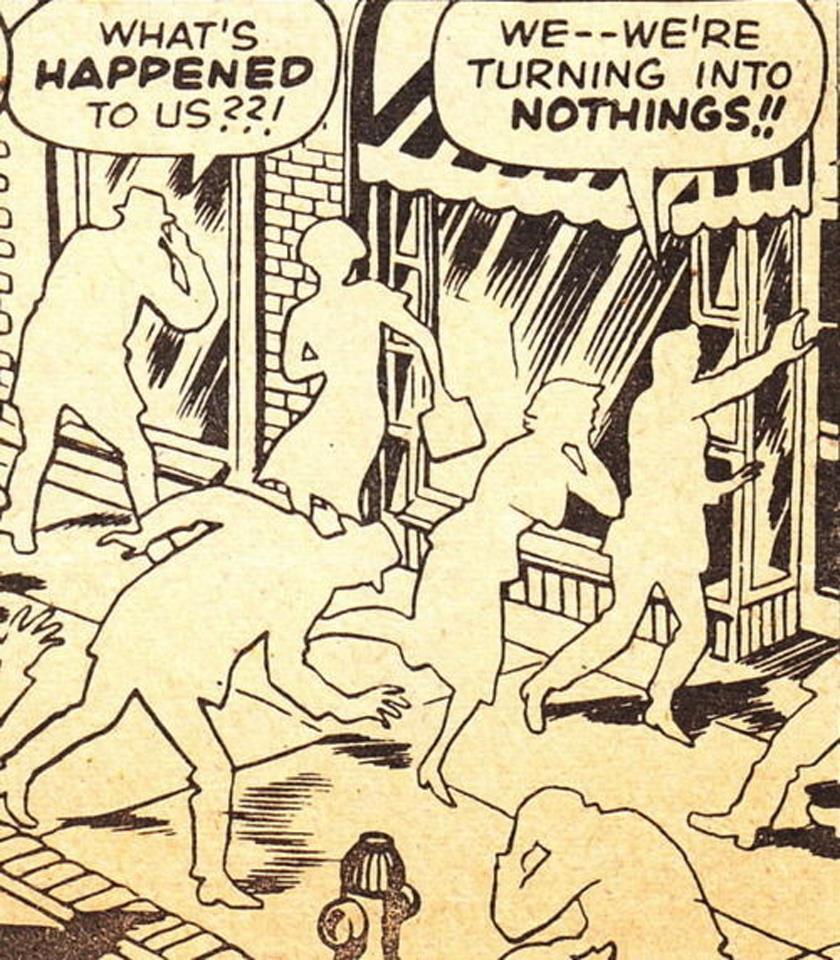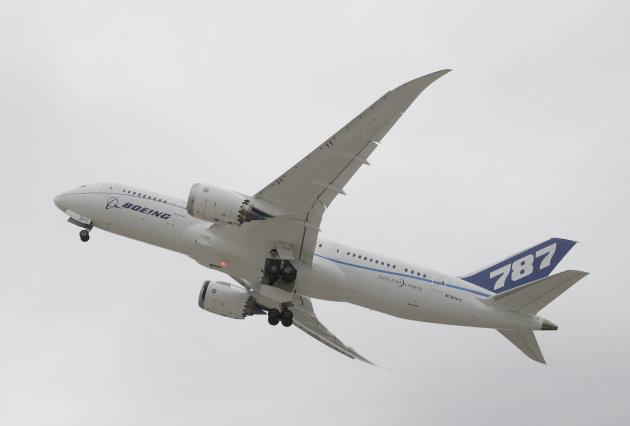At the same time the government certified Boeing's 787 Dreamliners as
safe, federal rules barred the type of batteries used to power the
airliner's electrical systems from being carried as cargo on
passenger planes because of the fire risk.
Dreamliners worldwide were grounded nearly three weeks ago after
lithium ion batteries that are part of the planes led to a fire in one plane and smoke in a second. But new rules exempt
aircraft batteries from the ban on large lithium ion batteries as cargo on flights by passenger planes.
In effect, that means the Dreamliner's batteries are now allowed to fly only if they're not attached to a Dreamliner.
The regulations were published on Jan. 7, the same day as a battery fire in a Japan Airlines
787 parked at Boston's Logan International Airport that took
firefighters nearly 40 minutes to put out. The timing of the two events
appears coincidental.
Pilots and safety advocates say the situation doesn't make sense. If
the 787's battery system is too risky to allow the planes to fly, then
it's too risky to ship the same batteries as cargo on airliners, they
said.
"These incidents have raised the whole issue of lithium batteries
and their use in aviation," said Jim Hall, a former National
Transportation Safety Board chairman. "Any transport of lithium
batteries on commercial aircraft for any purpose should be suspended
until (an) NTSB investigation is complete and we know more about this
entire issue."
Chesley "Sully" Sullenberger, a former US Airways pilot famed for his
precision flying that enabled passengers and crew to survive an
emergency landing on the Hudson River in New York, said in an interview
that he wouldn't be comfortable flying an airliner that carried lithium
ion aircraft batteries in its cargo hold.
"The potential for self-ignition, for uncontained fires, is huge," he
said. The new regulations "need to be looked at very hard in the cold
light of day, particularly with what has happened with the 787
batteries."
The battery rules were changed in order to conform U.S. shipping
requirements with international standards as required by Congress, the
federal Pipeline and Hazardous Materials Safety Administration said in a
statement.
The International Civil Aviation Organization, a U.N. agency that sets global aviation standards, adopted the aircraft battery
cargo exemption in October 2011, and it went into effect Jan. 1. The
organization's standards normally aren't binding. But a provision
inserted into U.S. law at the behest of the battery industry and their
shippers says the rules can't be stricter than the U.N. agency's
standards.
Previously, U.S. regulations prohibited the shipment of lithium ion
batteries on passenger planes in packages weighing more than 11 pounds,
although heavier batteries could be shipped on cargo planes.
The new rules allow the shipment of lithium ion batteries weighing as
much as 77 pounds, but only if they are aircraft batteries. Shipments
of other lithium ion batteries greater than 11 pounds are still
prohibited. The 787's two batteries weigh 63 pounds each. It's the first
airliner to make extensive use of lithium ion batteries, which weigh
less and store more power than other batteries of a similar size.
The aircraft battery exemption was created for the convenience of the
airline industry, which wants to be able to quickly ship replacement
batteries to planes whose batteries are depleted or have failed.
Sometimes it's faster to do that using a passenger plane.
The NTSB is investigating the cause of the 787 battery fire in
Boston. Japanese authorities are investigating a battery failure that
led to an emergency landing by an All Nippon Airways 787 on Jan. 16. All
Dreamliners, which are operated by eight airlines in seven countries,
have since been grounded.
The International Air Transport Association, which represents U.S.
airlines and other carriers that fly internationally, asked for the
aircraft battery exemption at the October 2011 meeting of the U.N.
agency's dangerous goods committee.
The association argued that the exemption would give airlines
"significant operational flexibility in being able to move aircraft
batteries on a passenger aircraft where cargo aircraft may not be
available over the route, or within the time required if a battery is
required at short notice," according to a copy of the request obtained
by The Associated Press.
Since the batteries have to meet special safety standards in order to
be installed on planes, "it is believed that exceeding the (11-pound)
limit for passenger aircraft will not compromise safety," the request
said.
Some members of the committee opposed allowing shipments of lithium
ion aircraft batteries on passenger planes, saying safety regulations
that let the batteries be used onboard planes don't necessarily ensure
they can be transported safely as cargo, according to a summary of the
meeting posted online by the U.N. agency.
"One member had discussed this proposal with an engineer in their
(country's) airworthiness office who was familiar with standards for
batteries installed in aircraft," the summary said. "This colleague did
not believe testing standards for installed aircraft batteries warranted
special treatment for transport purposes." It was pointed out that the
safety standards applied to batteries used in the operation of an
aircraft are "narrowly tailored to performance issues and how the
battery interacted with aircraft systems," the summary said.
The summary doesn't identify the
committee member, but a source familiar with the deliberations said it
was the U.S. representative, Janet McLaughlin. She abstained from the
vote on the standards, said a federal official with knowledge of the
meeting. Neither source was authorized to comment publicly and both
spoke only on condition of anonymity.
The Japan Airlines fire ignited
about half an hour after the plane had landed in Boston and nearly 200
passengers and crew members had disembarked. Firefighters were alerted
after a cleaning crew working in the plane smelled smoke. It took nearly
40 minutes to put out the fire.
The "multiple systems" that were
designed to prevent the 787's batteries from catching fire "did not work
as intended," Deborah Hersman, the current NTSB chairman, told
reporters recently. The "expectation in aviation is never to experience a
fire on an aircraft," she said.
Concern about transport of
lithium ion aircraft batteries on passenger planes isn't limited to the
batteries used in the 787. The Airbus A350, expected to be ready next
year, will also make extensive use of lithium ion batteries.
Aircraft manufacturers are also
considering retrofitting some planes to replace their batteries with
lithium ion batteries to save weight, according to the airline
association. The less a plane weighs, the less fuel it burns. Fuel is
the biggest operating expense of most airlines.
Cargo airline pilots long have complained about the dangers of transporting lithium batteries.
The batteries are suspected of causing or contributing to the severity
of an onboard fire that led to the September 2010 crash of a United
Parcel Service plane near Dubai, killing both pilots. The two pilots of
another UPS plane barely managed to escape the aircraft before it was
consumed by fire moments after landing in Philadelphia in 2006.
Fires involving rechargeable lithium-ion batteries can reach 1,100 degrees and are extremely difficult to put out.













 I
used to watch new episodes of my favorite shows every week on
television. Now I watch one show, episode by episode, in sequence and on
a computer screen. Then the next show. According to New York Times reporter Brian Stelter, that's become normal:
I
used to watch new episodes of my favorite shows every week on
television. Now I watch one show, episode by episode, in sequence and on
a computer screen. Then the next show. According to New York Times reporter Brian Stelter, that's become normal:



![lostsplendor:
Hazel Lee [1912-1944]
Experienced women pilots, like Lee, were eager to join the WASP, and responded to interview requests by Cochran. Members of the WASP reported to Avenger Field, in wind swept Sweetwater, Texas for an arduous 6-month training program. Lee was accepted into the 4th class, 43 W 4.[2] Hazel Ying Lee was the first Chinese American woman to fly for the United States military.
Although flying under military command, the women pilots of the WASP were classified as civilians. They were paid through the civil service. No military benefits were offered. Even if killed in the line of duty, no military funerals were allowed. The WASPs were often assigned the least desirable missions, such as winter trips in open cockpit airplanes. Commanding officers were reluctant to give women any flying deliveries. It took an order from the head of the Air Transport Command to improve the situation.
Upon graduation, Lee was assigned to the third Ferrying Group at Romulus, Michigan. Their assignment was critical to the war effort; Deliver aircraft, pouring out of converted automobile factories, to points of embarkation, where they would then be shipped to the European and Pacific War fronts. In a letter to her sister, Lee described Romulus as “a 7-day workweek, with little time off.” When asked to describe Lee’s attitude, a fellow member of the WASP summed it up in Lee’s own words, “I’ll take and deliver anything.”
Described by her fellow pilots as “calm and fearless,” Lee had two forced landings. One landing took place in a Kansas wheat field. A farmer, pitchfork in hand, chased her around the plane while shouting to his neighbors that the Japanese had invaded Kansas. Alternately running and ducking under her wing, Lee finally stood her ground. She told the farmer who she was and demanded that he put the pitchfork down. He complied.
Lee was a favorite with just about all of her fellow pilots. She had a great sense of humor and a marvelous sense of mischief. Lee used her lipstick to inscribe Chinese characters on the tail of her plane and the planes of her fellow pilots. One lucky fellow who happened to be a bit on the chubby side, had his plane dubbed (unknown to him) “Fat Ass.”
Lee was in demand when a mission was RON (Remaining Overnight) In a big city or in a small country town, she could always find a Chinese restaurant, supervise the menu, and often cook the food herself. She was a great cook. Fellow WASP pilot Sylvia Dahmes Clayton observed that “Hazel provided me with an opportunity to learn about a different culture at a time when I did not know anything else. She expanded my world and my outlook on life.”
Lee and the others were the first women to pilot fighter aircraft for the United States military.
Image (via World War II Database)
Text [click for full article] (via Wikipedia)](http://24.media.tumblr.com/tumblr_lzvpdvTodm1qbwvhpo1_500.jpg)







